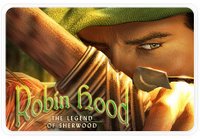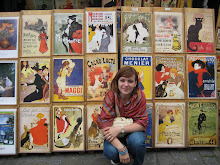The Legend of Robin Hood
"attend and listen gentlemen
that be of freeborn blood
I shall tell you of a good yeman
His name was Robyn Hode"
that be of freeborn blood
I shall tell you of a good yeman
His name was Robyn Hode"
Was he historical fact or simply a medieval fiction? Why has the Robin Hood Legend become so loved and well known across the world and through the generations?Most of our knowledge about the Robin Hood legend derives from the earliest ballads and tales (written down before 1550) which have passed through the centuries. Despite Robin's "legend" status, there are many reasons to believe that Robin Hood could well have been a real historical figure. Researchers into the legend have uncovered compelling evidence about this historical period here in Nottingham that points to an underlying reality for our favourite Outlaw.
Who Was Robin Hood?
Robin is famous for his gallantry, robbing the rich to feed the poor and fighting against injustice and tyranny. Anyone who knows of Robin has also heard the stories of his outlaw band. The names of Little John, Friar Tuck, Maid Marion, Allan a Dale, Will Scarlet, Much the Miller and the evil Sheriff of Nottingham are as much a part of the legend as Robin Hood himself.The stories of Robin portray him as a fearless outlaw leading his band of "merry men" (and women) against the tyranny of Prince John, The Sheriff of Nottingham and Sir Guy of Gisbourne. A brilliant archer, Robin lived a life of adventure - poaching the King's deer from the outlaws' retreat in Sherwood Forest.Stories about the adventures of Robin have been told and retold for over six hundred years. In Robin's time, few people could read or write and consequently little was written down about the exploits of our hero. Instead, people learnt about Robin and his band through the ballad and song of wandering minstrels who weaved a patchwork of fact and fiction into the contemporary culture of the time.
When did Robin Live?
Historians and researchers have a range of views but generally believe thatRobin Hood was alive around the thirteenth century.The earliest reference to Robin Hood is in William Langland's poem"The vision of William concerning Piers Plowman" which was written in 1377.
Where did Robin live?
No story of Robin Hood is complete without its setting, Sherwood Forest which inRobin's time covered about 100,000 acres. At the heart of the Greenwood encampment liesthe famous Major Oak, the "council tree" of the outlaw band.Sherwood Forest was of course home for the Kings deer which the outlawshunted for their illegal feasts. People in Robin's time saw the forestas a dangerous place and travelled mostly in large groupsfor fear of ambush and robbery. To Robin and the outlaws Sherwood Forest was aplace of safety from the Sheriff's, men.Today, Sherwood Forest Country Park covers about 450 acres and attractsaround 3/4 million visitors a year who flock to see the Major Oak and the Visitor Centre.Each year in August the Forest plays host to the Robin Hood Festivalwhere enthusiasts can recapture the spirit of Robin Hood in thebeautiful surroundings of the Greenwood.
Where did Robin live?
No story of Robin Hood is complete without its setting, Sherwood Forest which inRobin's time covered about 100,000 acres. At the heart of the Greenwood encampment liesthe famous Major Oak, the "council tree" of the outlaw band.Sherwood Forest was of course home for the Kings deer which the outlawshunted for their illegal feasts. People in Robin's time saw the forestas a dangerous place and travelled mostly in large groupsfor fear of ambush and robbery. To Robin and the outlaws Sherwood Forest was aplace of safety from the Sheriff's, men.Today, Sherwood Forest Country Park covers about 450 acres and attractsaround 3/4 million visitors a year who flock to see the Major Oak and the Visitor Centre.Each year in August the Forest plays host to the Robin Hood Festivalwhere enthusiasts can recapture the spirit of Robin Hood in thebeautiful surroundings of the Greenwood.
Where is Robin Buried?
According to the legend, Robin journeyed to Kirklees Priory where he was eventually killed by his cousinthe prioress and Sir Roger of Doncaster.It is at Kirklees Priory that the supposed grave of Robin Hood can still be seen to this day.Sadly, much of Kirklees Priory is now ruined but roughly 600 metres from the gatehousea medieval gravestone was found bearing a partial inscription "here lies Robard Hude..."
Who was really Robin Hood?
Whilst the spirit of Robin Hood lives on, the hard historical evidence is somewhat more elusive.
Candidates to be the real Robin Hood are:
Robert fitz Ooth - Earl of Huntingdon, Born 1160 - Died 1247
Robert de Kyme, Born c1210 - Died c1285
Robin Hood of the Wakefield Rolls, Born 1290 - Died 1347
Sir Robert Foliot and descendents, Born 1110 - died 1165
Robert Hod - Hobbehod, Birth and death unknown
Certainly, there are many who state clearly that they have discovered his true identity and others who with equal vigour will dispute these claims and continue to search for a definitive answer. To a certain extent, this is what keeps the Legend so alive to this day.The wonderful thing about the Robin Hood story is that it means so many things to so many people. The triumph of good over evil. The robbing of the rich to give to the poor. The romance of Robin and Marian. The very image of outlaws pursuing their lifestyle in defiance of authority. The kinship of the outlaw band. The paganistic references to the Green Man and the connections with nature and the outdoor life. The medieval imagery of longbows, castles and Kings. The ballads, court rolls and faded manuscripts that feed the dedicated researchers and academics in their quest to find the truth. The magical landscapes, woodlands and places that bring the tales to life for any visitor to Nottingham.All these and more are weaved into the rich tapestry that is Robin Hood
Who was really Robin Hood?
Whilst the spirit of Robin Hood lives on, the hard historical evidence is somewhat more elusive.
Candidates to be the real Robin Hood are:
Robert fitz Ooth - Earl of Huntingdon, Born 1160 - Died 1247
Robert de Kyme, Born c1210 - Died c1285
Robin Hood of the Wakefield Rolls, Born 1290 - Died 1347
Sir Robert Foliot and descendents, Born 1110 - died 1165
Robert Hod - Hobbehod, Birth and death unknown
Certainly, there are many who state clearly that they have discovered his true identity and others who with equal vigour will dispute these claims and continue to search for a definitive answer. To a certain extent, this is what keeps the Legend so alive to this day.The wonderful thing about the Robin Hood story is that it means so many things to so many people. The triumph of good over evil. The robbing of the rich to give to the poor. The romance of Robin and Marian. The very image of outlaws pursuing their lifestyle in defiance of authority. The kinship of the outlaw band. The paganistic references to the Green Man and the connections with nature and the outdoor life. The medieval imagery of longbows, castles and Kings. The ballads, court rolls and faded manuscripts that feed the dedicated researchers and academics in their quest to find the truth. The magical landscapes, woodlands and places that bring the tales to life for any visitor to Nottingham.All these and more are weaved into the rich tapestry that is Robin Hood




4 Comments:
Robin Hood actually lived in Romania, under the name Robin the Hungarian [Robin Ungurul] ... somewhere in 1200 ... and his camp was in the forest named in this days Letea Forest [Padurea Letea] where you can find his greaveyard ... he was killed by dracula [Vlad ala adracului] ... so .. this is the thrue ... those guys from Nottingham just imported the story when they come to se dracula's tomb ... ah .. and btw. dracula diden't exist.
This comment has been removed by a blog administrator.
:) Sunt foarte mandra de tine ca te-ai prins de asta.. :)
:P
Post a Comment
Subscribe to Post Comments [Atom]
<< Home